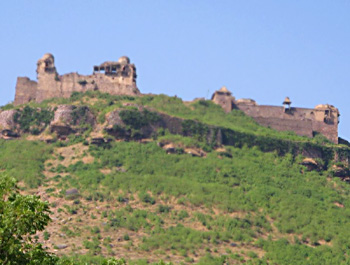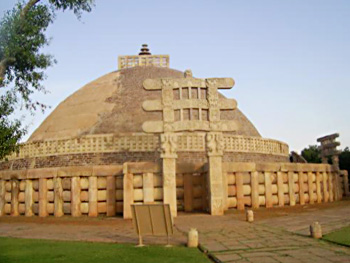 Raisen district got its name from massive Fort. This fort is made on a sandstone hill, at the foot of which is the district. The name of this district is probably a corruption of Rajavasini or Rajasayan, the royal residence. The district of Raisen is situated in the central part of the state of Madhya Pradesh in India.
Raisen district got its name from massive Fort. This fort is made on a sandstone hill, at the foot of which is the district. The name of this district is probably a corruption of Rajavasini or Rajasayan, the royal residence. The district of Raisen is situated in the central part of the state of Madhya Pradesh in India.
History of Raisen District
The district of Raisen with a strong fort was an important centre of administration from the period of its foundation from Hindu kingdoms in India. In the fifteenth century, the Sultans of Mandu ruled this fort, from whom it passed on to the Rajputs. In the year 1543, Sher Shah Suri captured from Puranmal. In the time of Akbar, Raisen was the headquarters of a Sarkar in the Subah of Ujjain in Malwa. Fiaz Mohammad Khan, the third Nawab of Bhopal state occupied it in about 1760, later got himself recognized as Faujder of Raisen by Emperor Alamgir II. The present district of Raisen in the Indian state of Madhya Pradesh came into existence on the 5th of May 1950, with its headquarters at Raisen.
Geography of Raisen District
The District is located in between 22 degrees 45 minutes and 22 degrees 33 minutes to the North Latitudes and 77 degrees 21 minutes and 78 degrees 49 minutes to the East Longitudes. The Raisen district forms its borders with the Sehore district to the West, Vidisha district to the North, Sagar district to the East and South-East, Narsimhapur district to the south-east and Hoshangabad district and Sehore district to the south. The total area over which the district of Raisen is spread is 8395 square kilometres, which is about 1.93 percent of the total are of the state of Madhya Pradesh.
Demography of Raisen District
According to the 2011 Population Census, Raisen District had a population of 1,331,699. Raisen District ranks 365th in India. The district has a population density of 157 inhabitants per square kilometres. The population growth rate of 2011 was 18.36 percent. Raisen has a sex ratio of 899 females for every 1000 males.
 Education of Raisen District
Education of Raisen District
The average literacy rate of Raisen is 74.26 percent. According to the gender, the male and female literacy rates were 82.46 and 65.09 percent respectively. The total literates in Raisen District were 837,567. Out of which the male and female literates were 490,921 and 346,646 respectively. For educational purposes, there are one thousand eight hundred and thirty three primary schools, six hundred and thirty one middle schools, eighty-seven high schools, forty-three higher secondary schools, twelve colleges, one technical institute, etc
Tourism of Raisen District
There are several places of tourist interest like Sanchi Stupa, Bhimbetka, Bhojpur, etc in the district of Raisen in Madhya Pradesh state. Situated on the foot of a hill, Sanchi is just forty-six kilometres from Bhopal. Sanchi is more of a village than a town. It is a religious place with archaeological and historical significance. Sanchi is a site for numerous stupas, which were constricted on a hilltop. The place is related to Buddhism but not directly to the life of Buddha. It is more related to Emperor of Maurya Empire, Ashoka than to Lord Buddha. Ashoka constructed the first stupa and put up many pillars here. Sanchi has been famous for the Stupas, which were erected on the top of a hill. Though most of the stupas are in ruins, now three remain intact and are of great archaeological value.
The Gupta Temple is one of the most famous attractions of Sanchi. Even if in ruins, this temple is a burning example of the greatness of the past. The temple was erected during the 5th century is an excellent example of ancient temple architecture in India. The Archaeological Survey of India maintains a museum, which house many items, which were discovered during the excavation of Sanchi area. Most prized possession of the museum is the lion crown from pillars of Asoka . Another attraction in this is Bhojpur, which is twenty-eight kilometres from Bhopal. It is renowned for the remains of its magnificent Lord Shiva Temple and Cyclopean dam. The temple, which has earned the nomenclature of the Somnath of the East, is known as the Bhojeshwar Temple.
Bhimbethika is another place of tourist interest in the district of Raisen which is surrounded by the northern fringe of the Vindhya Mountain Range. It is forty-six kilometers to the south of Bhopal. In vivid panoramic detail, paintings in over five hundred caves depict the life of the prehistoric cave dwellers, making the Bhimbetka group an archaeological treasure, an invaluable chronicle in the history of man.



















